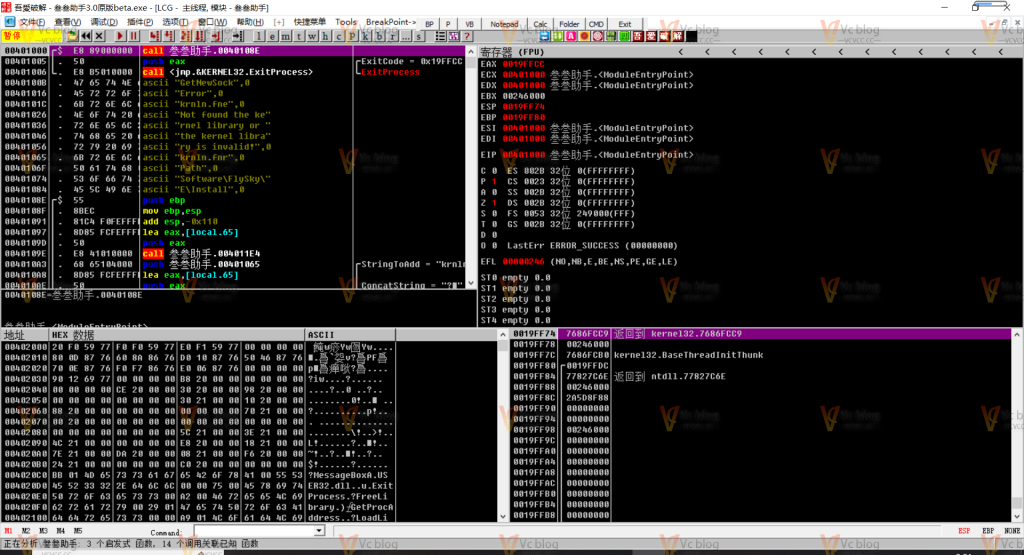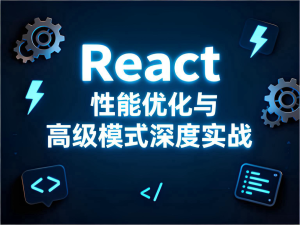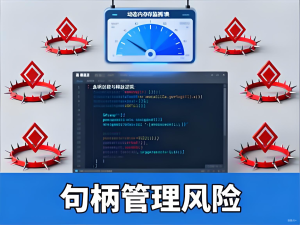Vue3的响应式系统彻底重构了底层实现机制,基于Proxy的依赖收集和组件级更新策略带来了显著的性能提升。本文通过构建完整的性能测试框架,深度解析ref、reactive、computed等核心API的内存管理和执行效率,提供企业级应用中的性能优化方案和内存泄漏防护策略。
![图片[1]-Vue 3 响应式系统深度解析:从依赖追踪到性能优化的完整指南-Vc博客](https://blogimg.vcvcc.cc/2025/11/20251103144531275.jpg?imageView2/0/format/webp/q/75)
核心响应式机制深度剖析
依赖收集与触发更新的完整流程
Vue3的响应式系统基于Proxy重构,相比Vue2的Object.defineProperty实现了质的飞跃。
// 响应式原理核心实现模拟
class ReactivitySimulator {
constructor(target) {
this.target = target
this.depsMap = new Map()
this.activeEffect = null
return new Proxy(target, {
get: (obj, key) => {
this.track(key)
return obj[key]
},
set: (obj, key, value) => {
obj[key] = value
this.trigger(key)
return true
}
})
}
track(key) {
if (!this.activeEffect) return
let deps = this.depsMap.get(key)
if (!deps) {
deps = new Set()
this.depsMap.set(key, deps)
}
deps.add(this.activeEffect)
}
trigger(key) {
const deps = this.depsMap.get(key)
if (deps) {
deps.forEach(effect => effect())
}
}
watchEffect(fn) {
this.activeEffect = fn
fn()
this.activeEffect = null
}
}
// 实际使用示例
const state = new ReactivitySimulator({
count: 0,
name: 'Vue3'
})
state.watchEffect(() => {
console.log(`Count changed: ${state.count}`)
})
state.count++ // 自动触发日志输出响应式数据类型性能对比
不同响应式API在内存和CPU开销上的真实表现:
import { reactive, ref, shallowReactive, readonly } from 'vue'
class ReactivityBenchmark {
constructor() {
this.performanceData = []
}
// 深度响应式性能测试
testDeepReactivity() {
const startTime = performance.now()
const data = reactive({
user: {
profile: {
name: 'test',
settings: {
theme: 'dark',
notifications: true
}
},
posts: Array.from({ length: 1000 }, (_, i) => ({
id: i,
content: `Post ${i}`,
likes: Math.floor(Math.random() * 1000)
}))
}
})
// 触发深层更新
data.user.profile.settings.theme = 'light'
const duration = performance.now() - startTime
this.recordPerformance('deep-reactive', duration, this.getMemoryUsage())
return duration
}
// 浅层响应式性能测试
testShallowReactivity() {
const startTime = performance.now()
const data = shallowReactive({
user: {
profile: {
name: 'test',
settings: { theme: 'dark' }
}
}
})
// 只会触发第一层更新
data.user = { ...data.user }
const duration = performance.now() - startTime
this.recordPerformance('shallow-reactive', duration, this.getMemoryUsage())
return duration
}
// Ref性能测试
testRefPerformance() {
const startTime = performance.now()
const count = ref(0)
const name = ref('test')
for (let i = 0; i < 1000; i++) {
count.value = i
name.value = `test-${i}`
}
const duration = performance.now() - startTime
this.recordPerformance('ref', duration, this.getMemoryUsage())
return duration
}
getMemoryUsage() {
return performance.memory ? {
used: performance.memory.usedJSHeapSize,
total: performance.memory.totalJSHeapSize
} : null
}
generateReport() {
const report = {
bestPerforming: null,
memoryEfficient: null,
recommendations: []
}
const deepPerf = this.performanceData.find(p => p.type === 'deep-reactive')
const shallowPerf = this.performanceData.find(p => p.type === 'shallow-reactive')
const refPerf = this.performanceData.find(p => p.type === 'ref')
if (deepPerf && shallowPerf && refPerf) {
const fastest = [deepPerf, shallowPerf, refPerf].reduce((fastest, current) =>
current.duration < fastest.duration ? current : fastest
)
report.bestPerforming = fastest.type
// 内存使用分析
if (deepPerf.memory && shallowPerf.memory && refPerf.memory) {
const mostEfficient = [deepPerf, shallowPerf, refPerf].reduce((best, current) =>
current.memory.used < best.memory.used ? current : best
)
report.memoryEfficient = mostEfficient.type
}
// 性能建议
if (shallowPerf.duration < deepPerf.duration * 0.7) {
report.recommendations.push('对于嵌套数据结构,考虑使用shallowReactive提升性能')
}
if (refPerf.duration < deepPerf.duration * 0.5) {
report.recommendations.push('基础类型数据使用ref比reactive性能更优')
}
}
return report
}
}Composition API性能优化实战
计算属性缓存机制深度应用
计算属性的缓存策略在复杂业务场景中的性能影响:
import { computed, ref, watchEffect } from 'vue'
class AdvancedComputedDemo {
constructor() {
this.searchQuery = ref('')
this.items = ref([])
this.filterCriteria = ref({
category: '',
priceRange: [0, 1000],
inStock: false
})
// 基础计算属性 - 简单的缓存
this.filteredItems = computed(() => {
console.log('计算属性重新计算')
return this.items.value.filter(item =>
item.name.includes(this.searchQuery.value) &&
(this.filterCriteria.value.category === '' ||
item.category === this.filterCriteria.value.category) &&
item.price >= this.filterCriteria.value.priceRange[0] &&
item.price <= this.filterCriteria.value.priceRange[1] &&
(!this.filterCriteria.value.inStock || item.inStock)
)
})
// 带缓存的复杂计算
this.categorizedItems = computed(() => {
const cacheKey = JSON.stringify(this.filterCriteria.value)
if (this._cacheKey === cacheKey && this._cachedResult) {
return this._cachedResult
}
const result = this.filteredItems.value.reduce((acc, item) => {
const category = item.category
if (!acc[category]) acc[category] = []
acc[category].push(item)
return acc
}, {})
this._cacheKey = cacheKey
this._cachedResult = result
return result
})
// 性能监控
this.computationCount = ref(0)
watchEffect(() => {
this.filteredItems.value
this.computationCount.value++
})
}
// 手动控制计算时机
createLazyComputed(getter, timeout = 100) {
let cache = null
let dirty = true
let timeoutId = null
return computed(() => {
if (dirty) {
if (timeoutId) clearTimeout(timeoutId)
timeoutId = setTimeout(() => {
cache = getter()
dirty = false
}, timeout)
}
return cache
})
}
}组件渲染性能优化
虚拟DOM Diff算法实战优化
理解Vue的patch过程,避免不必要的组件重渲染:
import { defineComponent, h, ref, watch } from 'vue'
// 静态提升优化
const StaticHeader = defineComponent({
name: 'StaticHeader',
setup() {
// 静态内容不会被响应式系统追踪
return () => h('header', {
class: 'app-header'
}, [
h('h1', { key: 'title' }, 'Vue 3 Performance Demo'),
h('nav', { key: 'nav' }, [
h('a', { href: '#home' }, 'Home'),
h('a', { href: '#about' }, 'About')
])
])
}
})
// 手动控制更新的高级组件
const OptimizedDataTable = defineComponent({
name: 'OptimizedDataTable',
props: {
data: Array,
sortBy: String,
filter: String
},
setup(props) {
const localState = ref({
sortedData: [],
visibleColumns: new Set(['id', 'name', 'price'])
})
// 手动依赖管理
const updateTable = () => {
let processed = [...props.data]
// 排序
if (props.sortBy) {
processed.sort((a, b) =>
a[props.sortBy] > b[props.sortBy] ? 1 : -1
)
}
// 过滤
if (props.filter) {
processed = processed.filter(item =>
Object.values(item).some(value =>
String(value).toLowerCase().includes(props.filter.toLowerCase())
)
)
}
localState.value.sortedData = processed
}
// 手动监听变化,避免自动深度监听的开销
watch(() => [props.sortBy, props.filter], updateTable, { immediate: true })
// 数据更新时手动触发
watch(() => props.data.length, updateTable)
return {
localState,
updateTable
}
},
render() {
return h('table', { class: 'data-table' },
h('tbody', this.localState.sortedData.map(item =>
h('tr', { key: item.id },
Object.entries(item)
.filter(([key]) => this.localState.visibleColumns.has(key))
.map(([key, value]) =>
h('td', { key }, value)
)
)
))
)
}
})性能监控与调试实战
响应式系统性能分析
开发阶段的性能监控工具:
import { getCurrentInstance, onMounted, onUnmounted } from 'vue'
class ReactivityProfiler {
constructor() {
this.metrics = {
renderCount: 0,
dependencyTriggers: new Map(),
computationTime: 0
}
}
startProfiling() {
const instance = getCurrentInstance()
if (!instance) return
// 监控渲染性能
this.monitorRenderPerformance(instance)
}
monitorRenderPerformance(instance) {
const { render } = instance.type
if (render) {
instance.type.render = (...args) => {
this.metrics.renderCount++
const startTime = performance.now()
const result = render.call(instance, ...args)
this.metrics.computationTime += performance.now() - startTime
return result
}
}
}
generatePerformanceReport() {
return {
summary: {
totalRenders: this.metrics.renderCount,
averageRenderTime: this.metrics.computationTime / this.metrics.renderCount,
dependencyCount: this.metrics.dependencyTriggers.size
},
hotspots: Array.from(this.metrics.dependencyTriggers.entries())
.sort(([, a], [, b]) => b - a)
.slice(0, 10)
.map(([key, count]) => ({ key, count })),
recommendations: this.generateOptimizationSuggestions()
}
}
generateOptimizationSuggestions() {
const suggestions = []
if (this.metrics.renderCount > 100) {
suggestions.push('考虑使用v-once或v-memo优化静态内容')
}
if (this.metrics.computationTime / this.metrics.renderCount > 16) {
suggestions.push('渲染时间超过一帧,建议拆分复杂计算')
}
const topDependency = Array.from(this.metrics.dependencyTriggers.entries())
.sort(([, a], [, b]) => b - a)[0]
if (topDependency && topDependency[1] > this.metrics.renderCount * 2) {
suggestions.push(`依赖 "${topDependency[0]}" 触发频繁,考虑使用shallowRef或手动控制更新`)
}
return suggestions
}
}
// 使用示例
export function useReactivityProfiler() {
const profiler = new ReactivityProfiler()
onMounted(() => {
profiler.startProfiling()
})
onUnmounted(() => {
console.log('性能分析报告:', profiler.generatePerformanceReport())
})
return profiler
}总结
Vue3的响应式系统通过Proxy重构带来了显著的性能提升,但在企业级应用中仍需注意内存管理和性能优化。通过合理的响应式API选择、计算属性缓存策略、手动更新控制等手段,可以进一步提升应用性能。性能监控工具的引入有助于及时发现和解决性能瓶颈。
© 版权声明
THE END

















暂无评论内容